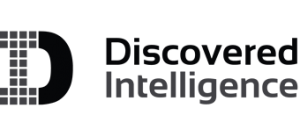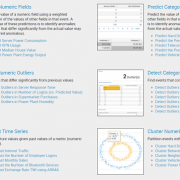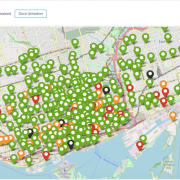The Challenges Faced by the Internet of Things (IoT) in Canada
There are a number of challenges which must be overcome for the expansion of the Internet of Things (IoT). In some areas there has been significant progress in the past decade, such as RFID technology, data storage capabilities, and the growth of both wired and wireless network infrastructures. While in other areas there remains a large amount of work to be done: privacy, information security, communication standardization and even educating end-users.
The majority of the challenges companies and countries face in the IoT space are universal and not just specific to Canada. Therefore, the problems can be tackled jointly for mutual benefit; a possible breeding ground for innovation. Canadian companies are in the mix of all this and there are some challenges in Canada that other nations may not have to consider for their IoT strategies.

Challenges Inhibiting Growth of the IoT
Networks with Automated Discovery Capabilities
It is important to remember the “things” connecting to IoT networks will not be static. In fact, the full potential of IoT is not realized in static environments because it limits the amount of data available for analysis. IoT networks will be incredibly dynamic and constantly evolving with new things added all the time and these things will need to work seamlessly with one another. Automated discovery capabilities will enable interaction between devices, even if these devices are not pre-configured or hard coded; thereby letting them form collaborative groups able to function collectively[i]. Without automated discovery and mapping capabilities IoT will not be scalable, impacting network efficiency.
Standardization Efforts
As IoT evolves it will be necessary to review regulatory constraints and investigate ways to ensure sufficient capacity for expansion on a global level, such as the allocation of additional radio spectrums[i]. The standardization of radio spectrums is a particularly difficult challenge to tackle because in order for global interoperability there is a need for world-wide cooperation. The frequency and allocation of radio spectrums is not consistent in all regions of the world, different bands are assigned for different purposes. Interoperability will be a slow process which will involve government agencies, regulators and international bodies. Until standardization in these areas are possible, devices will need to be capable of utilizing multiple protocols and frequencies.
Security, Confidentiality & Privacy
Components of the IoT network are vulnerable to attack for several reasons:
- The components which make up IoT remains mostly unattended, thus making them vulnerable to physical attacks.
- Most of the communications are wireless which allows intruders to eavesdrop on transmissions; authentication and data integrity will be a major issue.
- IoT components are characterized by low capabilities in regards to both energy and computing resources; the low computing power is a direct result of the low energy consumption required. Thus the components cannot implement complex schemes which enable greater security.
A large number of encryptions exist today to ensure confidentiality. The main challenge comes from making encryption algorithms faster and more energy efficient.
Privacy technology on the other hand is still in its infancy. From a legal perspective, issues remain far from clear; such as the impact of location tracking on privacy regulation and the issue of data ownership. How the greater population will react to the use of information for profit and any laws or regulations put in place to protect users will have an impact on the growth of IoT.
What is Happening in Canada?
What is happening in other regions of the world is not necessarily representative of what is occurring in Canada. For example, after winning the bid to host the 2022 World Cup, Qatar plans on investing heavily into its country’s infrastructure. Since much of the infrastructure will be new, the Qatari government can more easily install network systems and other IoT enabling technologies to become a Smart City. The plans for the Smart City goes beyond attracting tourists for the World Cup. Qatar has 250 major projects primarily in infrastructure, roads and transport, housing and industrial cities with an aim to boost its GDP. A country such as Canada on the other hand, with an aging infrastructure, cannot implement IoT in the same way and Smart City initiatives have not experienced the same type of government support as other countries. Without government support IoT use cases such as Smart Metering are less common, making Canada a laggard in this space.
Canada also has challenges in terms of the speed in which IoT technologies can be implemented. I am not here to argue if more regulation and compliance is a positive or negative for the Canadian economy, but these types of processes and due diligence undoubtedly extends planning, implementation and the resources necessary. Compliance and regulation also means data management becomes more complex.
In some regards though, the physical landscape of Canada provides opportunity for IoT solutions and services. As a country rich in natural resources, much of which is located in remote regions, IoT in Canada can be used to monitor assets across the country from a central hub and sensors can be used to monitor the health of pipelines to minimize financial loss and ecological damage. IoT can also help those working in these regions better safety and improved productivity. Equipment can be used to keep track of the locations of these workers in potentially hazardous working conditions. Technology, similar to that of Google Glasses, can help field workers transmit video to a central hub where experienced technicians can walk remote field workers through maintenance in the case an individual lacks the knowledge to accomplish it independently.
Despite IoTs infancy, certain industries and solutions have matured faster than others as a result of interest from public and private businesses. The more mature solutions include those revolving around:
- Asset & Inventory Management
- Connected Cars (including telematics)
- Fleet Management
- Logistics
- Predictive Maintenance
- Remote Field Services
- Remote Surveillance
- Smart Grids
These types of solutions are being deployed mainly in the following industries:
- Energy & Utilities
- Healthcare
- Manufacturing
- Oil & Gas
- Retail
- Transportation
Organization will need to be cautious when they approach or are approached by IoT and Big Data solution providers. Many of the use cases listed above have proven ROI use cases, which is why service providers selected them as part of their early IoT offerings. However, the majority of other IoT use cases have yet to consistently yield positive ROIs and solution providers are still perfecting the process and methodology of solution implementation.
The Fusion of Big Data & Little Babies
Sick Kids Hospital in Toronto provides a great example of IoT in Canada. Sick Kids Hospital demonstrates how IoT and Big Data is not just about coming up with wild new innovations, but how this technology can help organizations perform the same processes more efficiently and help improve our quality of life.

Early detection can dramatically improve the quality of life of infants and in some cases save their lives. Dr. Carolyn McGregor, from the University of Ontario Institute of Technology, built a system at Toronto Sick Kids Hospital to monitor newborns and predict infections 24 hours earlier than traditional methods. Traditional methods meant nurses monitored vital signs (i.e. heart rate, blood pressure, etc.) of prenatal babies and recorded these metrics only once an hour and historical data was deleted. This meant there was an enormous amount of information which was not being monitored or analyzed. With the help of IBM, Dr. McGregor started tracking and storing the data from health monitors 24 hours a day. At first, the amount of information was overwhelming and the team did not know exactly what they were looking for. However, when the data from an individual baby was compared with the group, the team began to see anomalies. So although the metrics from a single baby was difficult to analyze, the comparison of all the information from all the babies and the occurrence of anomalies helped them identify patterns of when the babies may experience early complications.
More information on the project can be found at the following link: http://www.ibmbigdatahub.com/blog/fusion-big-data-and-little-babies
Stay tuned for more! In our next post we will dive deeper into other interesting applications for IoT and Big Data around the globe.
______________________________________________________________
[i] Atzori, L., Lera A., & Morabito, G. (2010). The Internet of Things: A Survey. Computer Networks, 54(15), 2787-2805.
© Discovered Intelligence Inc., 2016. Unauthorised use and/or duplication of this material without express and written permission from this site’s owner is strictly prohibited. Excerpts and links may be used, provided that full and clear credit is given to Discovered Intelligence, with appropriate and specific direction (i.e. a linked URL) to this original content.








